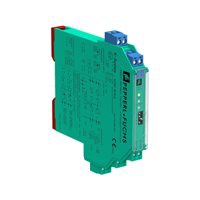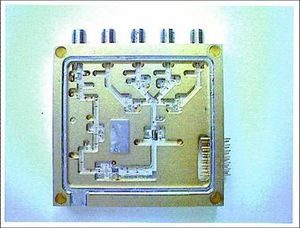Switch Amplifiers
Switch Amplifier is an electronic amplifier where all power devices are operated as binary Switches. They are either fully on or fully off. Ideally, zero time is spent transitioning between those two states. Output stages such as those used in pulse generators are examples of switch amplifiers. However, the term mostly applies to power amplifiers intended to reproduce signals with a bandwidth well below the switching frequency.
Basic operation
switch amplifiers work by generating a square wave of which the low-frequency portion of the spectrum is essentially the wanted output signal, and of which the high-frequency portion serves no purpose other than to make the wave-form binary so it can be amplified by switching the power devices. A passive low-pass filter removes the unwanted high-frequency components, i.e., smoothes the pulses out and recovers the desired low-frequency signal. To maintain high efficiency, the filter is made with purely reactive components , which store the excess energy until it is needed instead of converting some of it into heat. The switching frequency is typically chosen to be ten or more times the highest frequency of interest in the input signal. This eases the requirements placed on the output filter. In cost sensitive applications the output filter is sometimes omitted. The circuit then relies on the inductance of the loudspeaker to keep the HF component from heating up the voice coil. It will also need to implement a form of three-level modulation which reduces HF output, particularly when no signal is present. The structure of a class D power stage is essentially identical to that of a synchronously rectified buck converter, a type of non-isolated switched-mode power supply. Whereas buck converters usually function as voltage regulators, delivering a constant DC voltage into a variable load and can only source current , a switch amplifier delivers a constantly changing voltage into a fixed load, where current and voltage can independently change sign . A switching amplifier must not be confused with any amplifier that uses an SMPS. A switching amplifier may use any type of power supply but the amplification process itself operates by switching. Theoretical power efficiency of switch amplifiers is 100%. That is to say, all of the power supplied to it is delivered to the load, none is turned to heat. This is because an ideal switch in its on state will conduct all current but has no voltage across it, hence no heat is dissipated. And when it is off, it will have the full supply voltage standing across it, but no current flows through it. Again, no heat is dissipated. Real-life power MOSFETs are not ideal switches, but practical efficiencies well over 90% are common. By contrast, linear AB-class amplifiers are always operated with both current flowing through and voltage standing across the power devices. An ideal class B amplifier has a theoretical maximum efficiency of 78%.
Advantages
Despite the complexity involved, a properly designed switch amplifier offers the following benefits:
- reduction in size and weight of the amplifier
- reduced power waste as heat dissipation and hence smaller (or no) heat sinks
- reduction in cost due to smaller heat sink and compact circuitry
- very high power conversion efficiency
- usually better than 90% above one quarter of the amplifier's maximum power
- around 50% at low power levels
Uses
- Home Theatre systems: In particular the economical home theatre in a box systems are almost universally equipped with switch amplifiers. On account of modest performance requirements and straightforward design, direct conversion from digital audio to PWM without feedback is most common.
- Mobile phones: The internal loudspeaker is driven by up to 1 W. switch amplifier is used to preserve battery lifetime.
- Powered speakers
- High-end audio is generally conservative with regards to adopting new technologies but switch amplifiers have made an appearance
- Active subwoofers
- Sound reinforcement and live sound.

